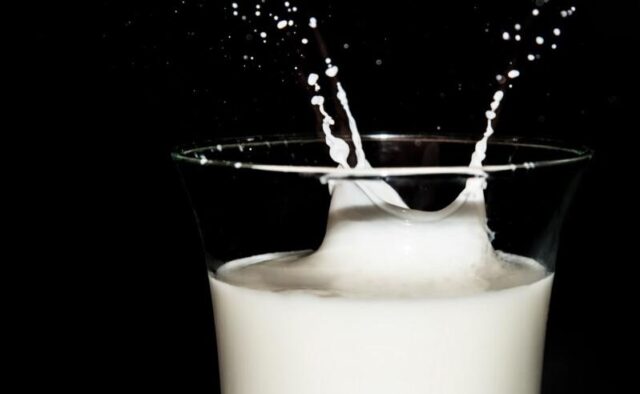Under-pressure dairy farmers are facing a triple whammy of heavy weather, infrastructure failure and load shedding.
DURBAN – Dairy farmers are being crippled by weeks of inclement weather in KwaZulu-Natal and industry experts are warning of possible supply chain disruptions if infrastructure repairs are not made a priority.
Farmers have been battling poor roads for a long time, but six weeks of heavy rains and high winds have caused severe infrastructural damage, making it hard to reach dairy farms to collect the milk. Add the ongoing load shedding to the mix and there’s a massive crisis waiting to happen.
Amy Webster from the Milk Producers Organisation confirmed that the recent heavy rains had caused more damage to rural roads and infrastructure.
“The severe storm with high winds affected several areas including Mooi River, Howick, Nottingham Road, and Rosetta. Several roads in the Midlands were blocked by fallen trees. Damage to silage crops varied, some heavily impacted.”
David de Jager, CEO of Tip-Top Milk, a leading milk logistics and testing company, warned that if the road infrastructure in rural and agricultural areas was not attended to timeously, it would have a devastating impact on the dairy industry, food security and the economy.
He said farmers from across KZN in areas like Harry Gwala, Mount Currie, Umgeni, Underberg and Mooi River districts had been affected.
“Our trucks are these farmers’ lifelines for timeous collection of their milk. If we are not able to access them because of extensive damage to farm and district roads, they are unable to make an income. They are also forced to dispose of their milk because cows need to be milked twice a day, every day,” said De Jager.
He said if the milk supply was disrupted, they would not be able to cope with market demands.
Apart from accessibility, the poor conditions had caused other problems.
“For some areas, the rains have been incessant for the past six weeks resulting in damage to dam spillways and water supply interruptions. Milking cows develop hoof problems walking around in deep mud and mastitis thrives in these conditions. In addition, waterlogged crops and pastures result in reduced maize yields and grazing, directly impacting feed supply in the coming months,” said De Jager.
Sandra Berning of Springvale Farm near Rosetta said their costs would run into millions after the most recent storm last Sunday when they were battered by high winds and 64mm of rain in just 20 minutes.
Milk trucks had to wait a day until the roads were cleared and the river had subsided enough before they could enter Springvale.
“It flattened the maize, so our maize crop is gone. It flattened our pastures so the animals had to be fed because there is no grass left. It will take about 21 days to come back so they have to be fed silage, but the silage crop for this year is completely flattened,” she said.
With all the silage they had for winter now used, they had to buy it, and the money from insurance was never enough to plant an entire crop.
“You can come back to the same pasture every 21 days in summer, but in winter that slows down to between 42 and 46 days before the pasture grows enough. So half of the food the cows need comes from silage. Now there is no more silage.”
Dairy farmers say road repairs have been almost non-existent. Over the years, many had taken to fixing them themselves so their productivity was not hampered.
The high cost of fertiliser because of the war in Ukraine, and harbour delays which slowed deliveries of fertiliser and electronic parts, had also hit their bottom line.
Until now, load shedding had been one of their most damaging issues, with thousands of rand spent on diesel monthly and small farmers with limited resources taking the hardest knock.
She said some farmers spent at least R40,000 a month on diesel and their electricity bills could go into hundreds of thousands of rand.
“You have to cool your milk down as quickly as possible otherwise the bacterial count gets too high,” she said.
To outfit dairies with solar would cost “anything from R15 million up, so it’s big money” and electricity costs about R200,000 a month to power a milking parlour, said Berning.
Carol Houston from Niekerksfontein Farm in Mooi River said after the heavy rains their pastures were too wet to make bales for feed. They also had to fix collapsed dam walls and fences that had been washed away, pushing up overall costs.
She said load shedding was a major concern: their diesel costs were huge and they had spent millions on solar energy. She said fertiliser prices were through the roof because of the war in Ukraine, while their input costs, labour, diesel and maize were also up.
“At one stage there were 300 farmers a year exiting the market because they just couldn’t make ends meet. So the farms that have been around have got bigger because that’s the only way they can stay afloat. It’s hard.
“Also, it’s 24/7, 365 days that the cows have to be milked twice a day: there’s no ‘like, oh it’s Christmas, ladies, turn your udders off’. You also have medical costs for the cows,” said Houston. “Give us electricity,” was her message to the government.
Another Midlands farmer said that dairy farmers did not have to go to Ukraine to be in a war zone, because they were at war with the weather, bad infrastructure and load shedding every day.








